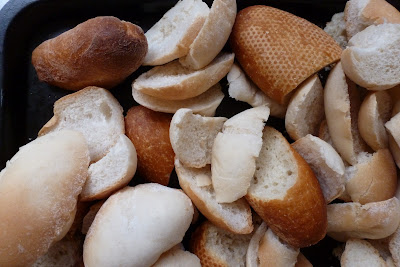 Cream, rich as an Irish brogue;
Cream, rich as an Irish brogue;Coffee, strong as a friendly hand;
Sugar, sweet as the tongue of a rogue;
Whiskey, smooth as the wit of the land.
-a traditional toast accompanying Irish coffee
There are two drinks that we go through in unholy quantities this time of year. The first without question is rum, as it is used in all kinds of preserves, baking, and cocktails. The second is Irish cream, consumed on its own, or diluted with a bit of milk or coffee.
For years my standby has been Bailey's, but this year I decided to make my own.
Irish cream is comprised of cream, sugar, and Irish whiskey, usually but not always flavoured with coffee. It is around 20% alcohol by volume, and has a rich, viscous mouthfeel. It is basically an Irish coffee (whiskey, sugar, and cream stirred into a cup of coffee) with the ingredients in different proportions.
If you plan on consuming Irish cream in coffee, there's probably not much point in flavouring it with coffee. I'm after a drink to be enjoyed on its own, so I've included strong coffee in my recipe.
I've come across some recipes online that use condensed milk to approximate the thickness of commercial brands. The truth is that it's not the thickness of condensed milk that gives the final drink a rich mouthfeel, it's the sugar content. Sugary liquids have a high specific gravity and give the impression of viscosity on the palate. Granulated sugar and cream therefore work just as well as condensed milk.
The following recipe is a reasonable facsimile of commercial brands, though with a more distinct coffee flavour. Obviously you can adjust the whiskey content to suit your taste.
a working recipe
Ingredients
- 4 egg yolks
- 50 g granulated sugar
- 1 pinch kosher salt
- 70 mL strong, high quality coffee, chilled
- 33 mL heavy cream
- 140 mL Irish whiskey, preferreably Jameson's
- 1.25 mL vanilla extract
- Whisk the sugar and salt into the egg yolks.
- Whisk in the remaining ingredients. Let stand in the fridge overnight.














